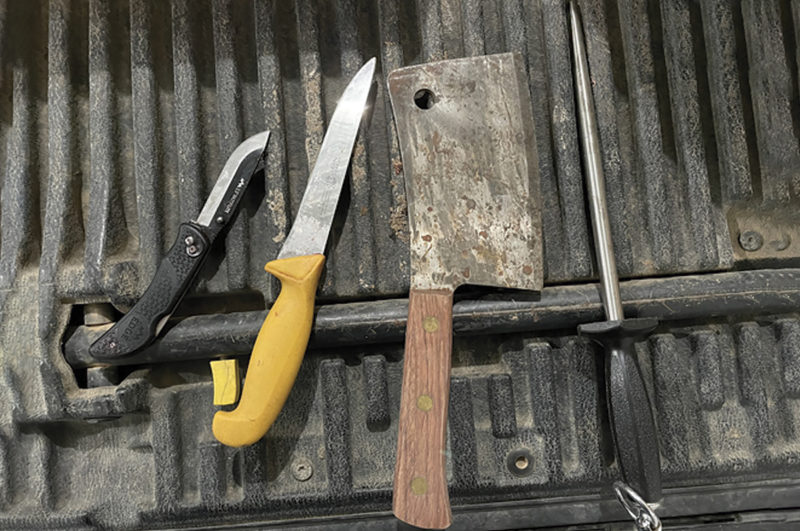It’s a call I get on a fairly regular basis when winter arrives in the Dakotas. Some of the timing has to do with the onset of tough weather combined with the big flush of calves from the fall run hitting the top of the mortality bell curve. The other aspect is that if a calf can choose to perish, why not pick the most inconvenient time of year to be outside in the cold? (Note, this same principle applies to cows getting out only when the corn is in full ear or you’re camping with the kids a couple hours from home.)
Despite the inclement weather, I for one enjoy doing necropsies. This doesn’t mean I like that a producer had a mortality, far from it. Rather, this procedure presents a riddle, a mystery that requires careful consideration to solve. You really don’t know what you’ll find when you open the animal, and abnormalities discovered may require a bit of pondering to bring the cause of death to light.
A specific steer I once examined comes to mind. The animal had been down for three days prior to death. The owner threw the kitchen sink at this steer to get it to recover, yet all attempts were futile. After it died, he called me to take a look at it. When I opened the steer, I noticed something quite odd about the intestines.
Now, I know I don’t have the best color vision, but even I could tell that those guts were blue. Blue intestines are not in the book of common bovine maladies, so I did a bit more digging. When I opened the heart, I found it had a large fragile growth in the left ventricle, the chamber that pumps blood to the rest of the body. A piece of the growth had broken off only to lodge in the artery that supplied blood to the small intestine, robbing it of oxygen. It was one of the strangest findings I’ve had on a necropsy and cool enough that I kept a picture of it on my phone. (It’s a good thing my wife is a veterinarian as well, otherwise she’d probably be more concerned with all the pictures I have saved.)
Despite my fondness for performing necropsies, the process is not one for the faint of stomach. The sights and smells of this endeavor will test the fortitude of the uninitiated. Though I’ve never had to catch a fainting farmer, I have had some turn away gagging, encouraging me to simply tell them the results once I complete the process.
There’s been lessons I’ve learned along the way, as well. The foremost being to keep my mouth shut. I’m not referring to withholding my postulated diagnosis until the entire examination is complete, though that is a good idea. Rather, I mean keep my mouth shut while cutting over the abdomen, especially on a bloat. Contrary to the opinion expressed by some old timers about the utility of these materials as condiments or salad dressing, they do not, in fact, taste good. Actually, they are the exact opposite of it. Flavorful, yes, and a flavor that lingers, but not the flavor you want to be reminded of in a few hours.
In spite of these negative aspects, necropsies are a solid way to determine what is happening in a herd or pen. Though it has limitations, it is irreplaceable for diagnostic evaluation of disease challenges. If you haven’t made a habit out of getting your deads posted, I would strongly encourage you take it up. The information is invaluable, and if you’re lucky, you’ll see something pretty neat. Just don’t do it right after lunch. ![]()
PHOTO: The tools of the trade in performing a necropsy help a "sharp" vet make an accurate diagnosis. Photo by Jacob Geis.
Jacob Geis is a veterinarian and blogger in Freeman, South Dakota.








